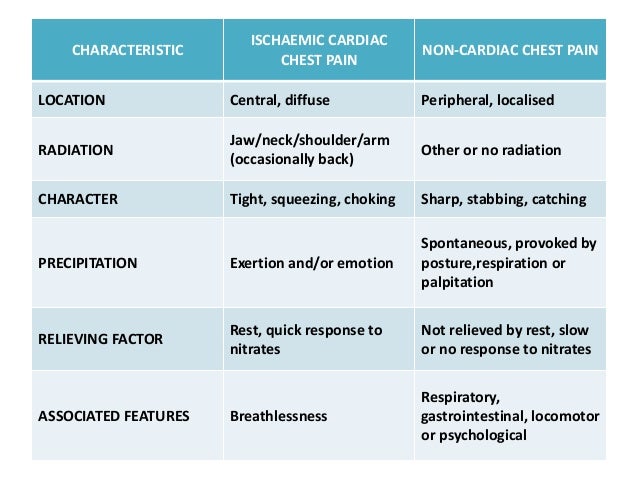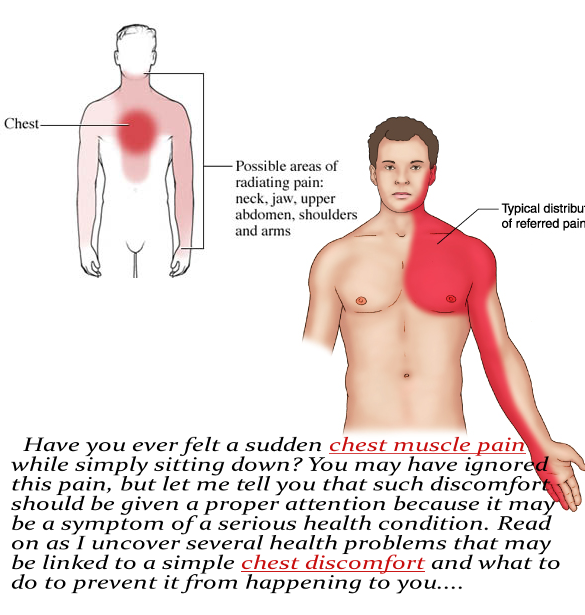Chest pain when pressing down. Costochondritis: Causes, Symptoms, and Treatment Options for Chest Pain
What are the common symptoms of costochondritis. How is costochondritis diagnosed. What treatments are available for managing costochondritis pain. When should you seek medical attention for chest pain.
Understanding Costochondritis: A Common Cause of Chest Pain
Costochondritis is an inflammatory condition affecting the cartilage connecting the ribs to the breastbone (sternum). This often-overlooked cause of chest discomfort can be both alarming and uncomfortable for those experiencing it. While generally not serious, costochondritis can mimic more severe conditions, making proper diagnosis crucial.
What exactly is costochondritis?
Costochondritis involves inflammation of the costal cartilages, which are the junction points where your upper ribs connect to the sternum. This inflammation typically affects the upper ribs, particularly on one side of the chest, though it can occur bilaterally. The resulting pain can range from mild tenderness to severe, sharp discomfort that may be mistaken for cardiac issues.

Recognizing the Symptoms of Costochondritis
Identifying costochondritis symptoms is crucial for proper diagnosis and treatment. While chest pain is the primary indicator, several other signs may accompany this condition.
What are the telltale signs of costochondritis?
- Localized chest pain, often sharp or aching
- Pain that worsens with deep breathing or coughing
- Tenderness when pressing on the affected area
- Discomfort that intensifies with certain movements or postures
- Pain that may radiate to the back or abdomen
It’s important to note that costochondritis pain can vary in intensity and may come on gradually or suddenly. Some individuals report increased discomfort when lying down or during physical activity. If you experience persistent or severe chest pain, particularly if accompanied by shortness of breath or other concerning symptoms, seek immediate medical attention to rule out more serious conditions.
Exploring the Causes and Risk Factors of Costochondritis
While the exact cause of costochondritis often remains elusive, several factors may contribute to its development or exacerbate existing inflammation.

What triggers costochondritis?
Common causes and risk factors for costochondritis include:
- Physical trauma to the chest area
- Repetitive strain from activities like heavy lifting or intense exercise
- Respiratory infections or conditions that cause frequent coughing
- Certain inflammatory disorders or autoimmune diseases
- Poor posture or ergonomic issues
Research suggests that women, particularly those who are physically active, may be more prone to developing costochondritis. Additionally, individuals with allergies or those frequently exposed to respiratory irritants may have an increased risk of experiencing this condition.
Diagnostic Approaches for Costochondritis
Diagnosing costochondritis can be challenging, as there is no definitive test for the condition. Healthcare providers typically rely on a combination of patient history, physical examination, and exclusion of other potential causes of chest pain.
How do doctors diagnose costochondritis?
The diagnostic process for costochondritis often involves:
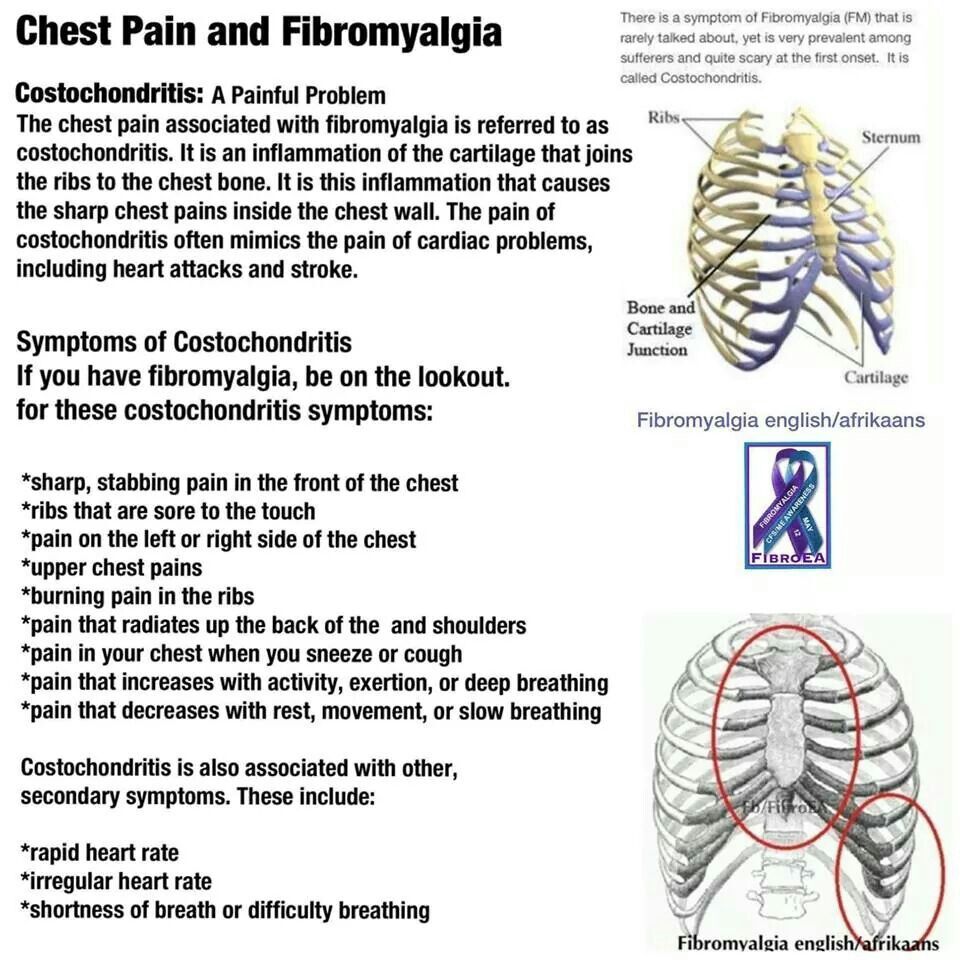
- A thorough medical history and symptom review
- Physical examination, including palpation of the chest wall
- Chest X-rays to rule out other conditions
- Electrocardiogram (ECG) to assess heart function
- Blood tests to check for signs of inflammation or infection
In some cases, additional imaging studies such as CT scans or MRIs may be recommended to exclude other potential causes of chest pain. It’s crucial to remember that costochondritis is often a diagnosis of exclusion, meaning other more serious conditions must be ruled out first.
Treatment Options for Managing Costochondritis
While costochondritis can be uncomfortable, several treatment options are available to manage pain and reduce inflammation. The appropriate approach depends on the severity of symptoms and individual patient factors.
What are effective treatments for costochondritis?
Common treatment modalities for costochondritis include:
- Over-the-counter pain relievers and anti-inflammatory medications
- Prescription-strength NSAIDs or corticosteroids for severe cases
- Rest and activity modification
- Physical therapy and gentle stretching exercises
- Application of heat or cold therapy
- Transcutaneous electrical nerve stimulation (TENS)
In most cases, costochondritis resolves on its own within a few weeks to months with appropriate management. However, some individuals may experience chronic or recurrent symptoms that require ongoing care and lifestyle adjustments.
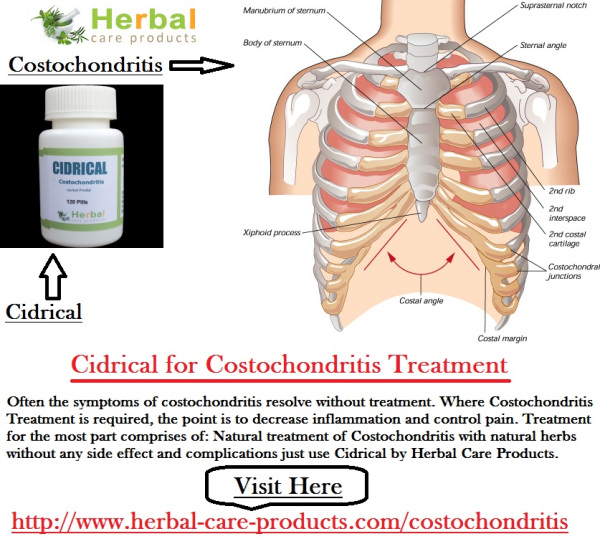
Lifestyle Modifications and Self-Care for Costochondritis
In addition to medical treatments, several lifestyle changes and self-care strategies can help manage costochondritis symptoms and prevent recurrence.
How can you alleviate costochondritis pain at home?
Consider implementing the following self-care measures:
- Practice good posture and ergonomics
- Avoid activities that exacerbate pain, such as heavy lifting
- Use a supportive pillow when sleeping or resting
- Incorporate gentle stretching and relaxation techniques
- Maintain a healthy weight to reduce stress on the chest wall
- Manage stress through meditation or other relaxation methods
It’s important to work closely with your healthcare provider to develop a comprehensive management plan tailored to your specific needs and circumstances.
When to Seek Medical Attention for Chest Pain
While costochondritis is generally not life-threatening, it’s crucial to recognize when chest pain may indicate a more serious condition requiring immediate medical intervention.
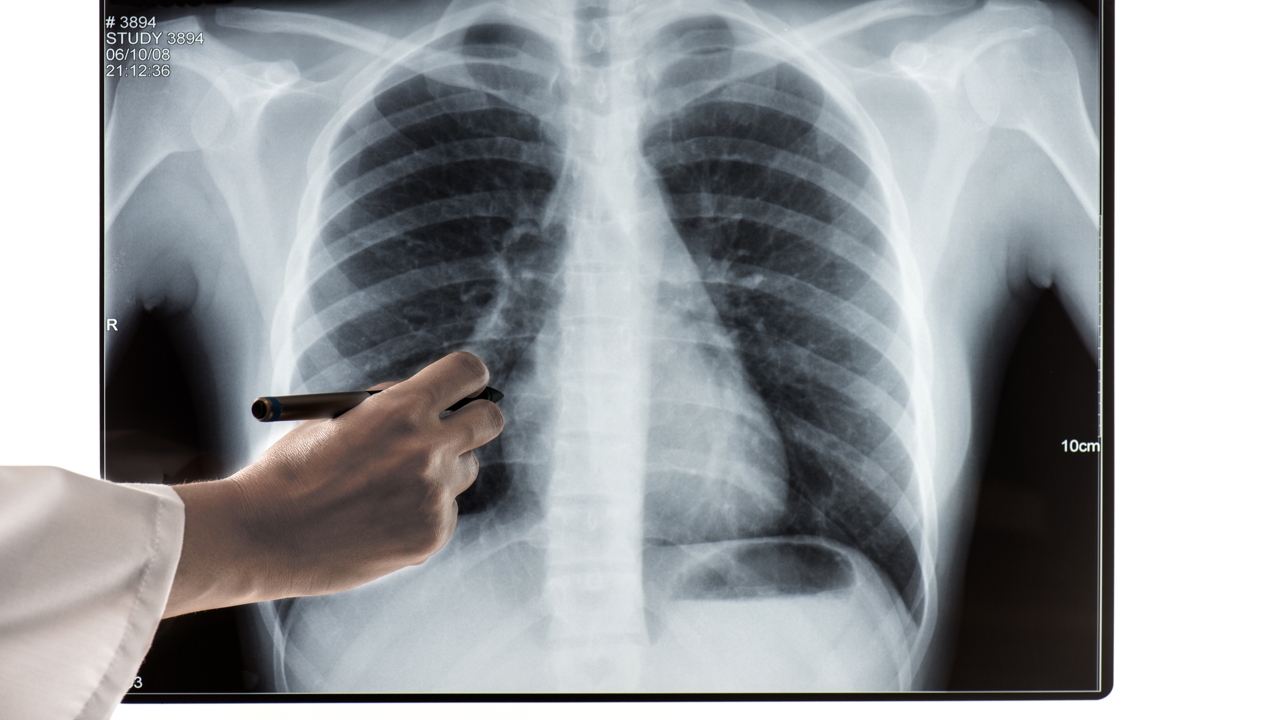
What chest pain symptoms warrant emergency care?
Seek immediate medical attention if you experience:
- Severe, crushing chest pain
- Chest pain accompanied by shortness of breath
- Pain that radiates to the jaw, left arm, or back
- Chest discomfort associated with nausea, sweating, or dizziness
- Rapid or irregular heartbeat
Remember, it’s always better to err on the side of caution when it comes to chest pain. Prompt evaluation can help rule out potentially life-threatening conditions and provide peace of mind.
Living with Chronic Costochondritis: Long-Term Management Strategies
For some individuals, costochondritis may become a chronic condition requiring ongoing management and care. Understanding how to cope with persistent symptoms is essential for maintaining quality of life and minimizing the impact on daily activities.
How can you effectively manage chronic costochondritis?
Long-term management strategies for chronic costochondritis may include:
- Regular follow-ups with your healthcare provider
- Developing a personalized pain management plan
- Exploring alternative therapies such as acupuncture or massage
- Participating in low-impact exercises and stretching routines
- Identifying and avoiding individual triggers
- Joining support groups or seeking counseling for emotional support
It’s important to remember that while chronic costochondritis can be challenging, many individuals successfully manage their symptoms and lead fulfilling lives with proper care and support.

Understanding costochondritis and its impact on daily life is crucial for those experiencing this condition. By recognizing symptoms, seeking appropriate medical care, and implementing effective management strategies, individuals can minimize discomfort and maintain their overall well-being. Remember to consult with healthcare professionals for personalized advice and treatment options tailored to your specific situation.
Symptoms, Causes, Tests, and Treatment
Costochondritis is an inflammation of the cartilage in the rib cage. It can happen due to infection, injury, and other health conditions.
This condition usually affects the cartilage where the upper ribs attach to the breastbone, also known as the sternum, in an area known as the costosternal joint or costosternal junction.
Chest pain caused by costochondritis can range from mild to severe. Mild cases may only cause your chest to feel slightly tender or some pain when you push on the area.
More severe cases may get worse with certain movements as well as with deep breaths. The condition often goes away within a few weeks or months, but some cases may require treatment.
People with costochondritis often experience chest pain in the upper and middle rib area on either side of the breastbone. This pain can gradually increase over time, or come on suddenly.
Additional symptoms can include:
- pain that becomes worse when lying down
- pain that becomes worse when there’s pressure on your chest, like when you wear a seatbelt
- pain that intensifies with coughing or deep breaths
- pain that increases with physical activity
It’s important to note that symptoms like chest tightness and radiating pain can indicate other conditions, including a heart attack. Seek immediate medical care if you’re experiencing persistent, intense chest pain.
Seek immediate medical care if you’re experiencing persistent, intense chest pain.
The exact cause of costochondritis in most people is unknown. But conditions that may cause it include:
- trauma to the chest, such as blunt impact from a car accident or fall
- physical strain from activities, such as heavy lifting and strenuous exercise
- certain viruses or respiratory conditions, such as tuberculosis, that can cause joint inflammation
- severe coughing
There’s some research that suggests costochondritis occurs more often in women, especially those who are athletes. You may also be at a higher risk for this condition if you:
- participate in high-impact activities
- recently had a physical trauma or fall that affected the chest area
- have allergies and are frequently exposed to irritants
While there’s no test to diagnose costochondritis, your doctor will most likely ask a series of questions and do a series of tests to determine the source of your chest pain.:max_bytes(150000):strip_icc()/right-sided-chest-pain-symptoms-and-possible-causes-4116859-5c77334ec9e77c00012f815f.png)
Lab tests
Typically, lab tests aren’t needed to diagnose costochondritis, but depending on your personal health history, your doctor may do some tests to see if your chest pain could be due to other issues like pneumonia or coronary heart disease.
X-rays and ECGs
Your doctor may want you to get an X-ray to make sure there’s nothing abnormal going out with your lungs.
If you’re dealing with costochondritis, your X-ray should look normal. They may also recommend an electrocardiogram (ECG) to make sure your heart isn’t the cause of your chest pain.
Many times, diagnosing costochondritis is a matter of eliminating other possible, more serious causes.
See your doctor right away if you have trouble breathing or are feeling intense chest pain.
Always seek immediate emergency care when you have abnormal and debilitating pain in your chest. It can indicate something serious, such as a heart attack.
Getting care as soon as possible limits the possibility of complications, especially if an underlying issue is causing your costochondritis.
Costochondritis can be treated in several ways.
Most cases of costochondritis are treated with over-the-counter medications. If your pain is mild to moderate, your doctor will probably recommend nonsteroidal anti-inflammatory drugs (NSAIDs) such as ibuprofen (Advil) or naproxen (Aleve).
Your doctor may also recommend:
- prescription-strength NSAIDs
- oral steroids or injection of a steroid into the area involved
- transcutaneous electrical nerve stimulation (TENS), which is a mild electric current that is delivered to the area via a small, battery-powered device
Lifestyle changes
Your doctor may tell you to make permanent lifestyle changes if you have persistent or chronic costochondritis.
Some types of exercise can aggravate this condition, including rowing and weightlifting. Manual labor may also have a negative effect.
Your doctor may also recommend:
- rest
- physical therapy
- hot or cold therapy using a heating pad and ice
Normally, treatment of the inflammation and pain causes costochondritis to eventually go away on its own.
If you have chronic costochondritis, the pain may persist or return — even with treatment — when you exercise or engage in certain activities. In these cases, you may need to seek long-term care to make sure that costochondritis doesn’t affect your quality of life and ability to take part in daily activities.
Pains associated with costochondritis can indicate other issues. Chest pain can often mean that you’re having heart or lung issues, so see your doctor right away when you feel pain in your chest to make sure that you’re not having a heart attack or have pneumonia.
The chest pain associated with costochondritis can be a symptom of fibromyalgia. With fibromyalgia, you may experience soreness in your chest in addition to:
- pain throughout your body
- fatigue and inability to rest due to pain
- difficulty focusing or concentrating
- feelings of depression
- headaches
If you experience chest pains along with these other symptoms, talk with your doctor about getting tested for fibromyalgia. Understanding this condition can help you address the symptoms and ensure that it doesn’t interrupt your daily life.
Understanding this condition can help you address the symptoms and ensure that it doesn’t interrupt your daily life.
Costochondritis is caused by inflammation and typically presents as chest pain that gets worse with certain movements or pressure. This condition usually isn’t persistent. In many cases, costochondritis goes away on its own.
Mild cases of costochondritis may disappear after a few days. Chronic cases can last for weeks or more, but most cases don’t last any longer than a year.
To lower your chances of developing persistent costochondritis, carry and lift heavy loads properly. Try doing fewer high-impact exercises or manual labor, when possible.
Seek medical attention immediately if you experience chest pain while performing any of these activities.
Symptoms, Causes, Tests, and Treatment
Costochondritis is an inflammation of the cartilage in the rib cage. It can happen due to infection, injury, and other health conditions.
This condition usually affects the cartilage where the upper ribs attach to the breastbone, also known as the sternum, in an area known as the costosternal joint or costosternal junction.
Chest pain caused by costochondritis can range from mild to severe. Mild cases may only cause your chest to feel slightly tender or some pain when you push on the area.
More severe cases may get worse with certain movements as well as with deep breaths. The condition often goes away within a few weeks or months, but some cases may require treatment.
People with costochondritis often experience chest pain in the upper and middle rib area on either side of the breastbone. This pain can gradually increase over time, or come on suddenly.
Additional symptoms can include:
- pain that becomes worse when lying down
- pain that becomes worse when there’s pressure on your chest, like when you wear a seatbelt
- pain that intensifies with coughing or deep breaths
- pain that increases with physical activity
It’s important to note that symptoms like chest tightness and radiating pain can indicate other conditions, including a heart attack. Seek immediate medical care if you’re experiencing persistent, intense chest pain.
Seek immediate medical care if you’re experiencing persistent, intense chest pain.
The exact cause of costochondritis in most people is unknown. But conditions that may cause it include:
- trauma to the chest, such as blunt impact from a car accident or fall
- physical strain from activities, such as heavy lifting and strenuous exercise
- certain viruses or respiratory conditions, such as tuberculosis, that can cause joint inflammation
- severe coughing
There’s some research that suggests costochondritis occurs more often in women, especially those who are athletes. You may also be at a higher risk for this condition if you:
- participate in high-impact activities
- recently had a physical trauma or fall that affected the chest area
- have allergies and are frequently exposed to irritants
While there’s no test to diagnose costochondritis, your doctor will most likely ask a series of questions and do a series of tests to determine the source of your chest pain.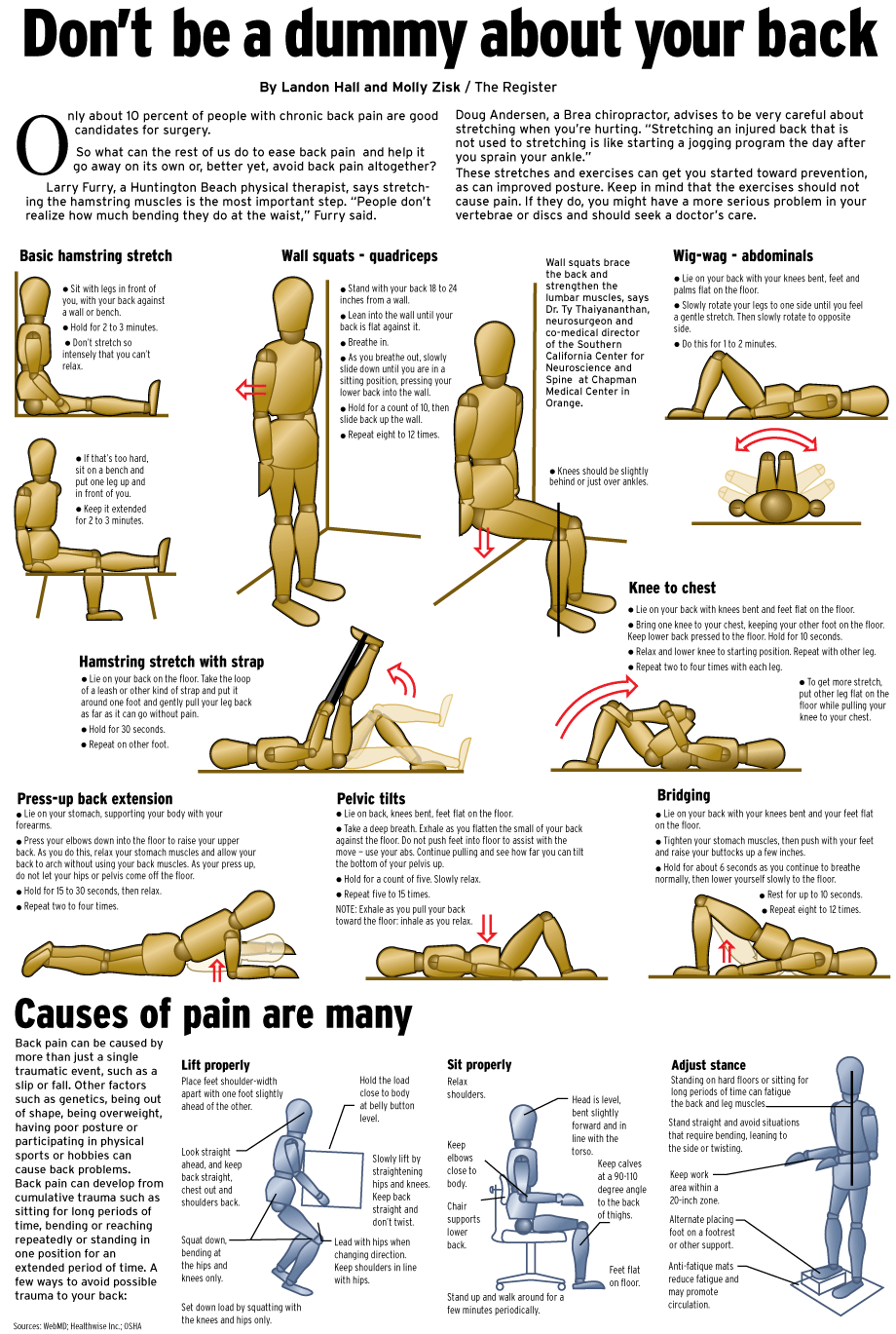
Lab tests
Typically, lab tests aren’t needed to diagnose costochondritis, but depending on your personal health history, your doctor may do some tests to see if your chest pain could be due to other issues like pneumonia or coronary heart disease.
X-rays and ECGs
Your doctor may want you to get an X-ray to make sure there’s nothing abnormal going out with your lungs.
If you’re dealing with costochondritis, your X-ray should look normal. They may also recommend an electrocardiogram (ECG) to make sure your heart isn’t the cause of your chest pain.
Many times, diagnosing costochondritis is a matter of eliminating other possible, more serious causes.
See your doctor right away if you have trouble breathing or are feeling intense chest pain.
Always seek immediate emergency care when you have abnormal and debilitating pain in your chest. It can indicate something serious, such as a heart attack.
Getting care as soon as possible limits the possibility of complications, especially if an underlying issue is causing your costochondritis.
Costochondritis can be treated in several ways.
Most cases of costochondritis are treated with over-the-counter medications. If your pain is mild to moderate, your doctor will probably recommend nonsteroidal anti-inflammatory drugs (NSAIDs) such as ibuprofen (Advil) or naproxen (Aleve).
Your doctor may also recommend:
- prescription-strength NSAIDs
- oral steroids or injection of a steroid into the area involved
- transcutaneous electrical nerve stimulation (TENS), which is a mild electric current that is delivered to the area via a small, battery-powered device
Lifestyle changes
Your doctor may tell you to make permanent lifestyle changes if you have persistent or chronic costochondritis.
Some types of exercise can aggravate this condition, including rowing and weightlifting. Manual labor may also have a negative effect.
Your doctor may also recommend:
- rest
- physical therapy
- hot or cold therapy using a heating pad and ice
Normally, treatment of the inflammation and pain causes costochondritis to eventually go away on its own.
If you have chronic costochondritis, the pain may persist or return — even with treatment — when you exercise or engage in certain activities. In these cases, you may need to seek long-term care to make sure that costochondritis doesn’t affect your quality of life and ability to take part in daily activities.
Pains associated with costochondritis can indicate other issues. Chest pain can often mean that you’re having heart or lung issues, so see your doctor right away when you feel pain in your chest to make sure that you’re not having a heart attack or have pneumonia.
The chest pain associated with costochondritis can be a symptom of fibromyalgia. With fibromyalgia, you may experience soreness in your chest in addition to:
- pain throughout your body
- fatigue and inability to rest due to pain
- difficulty focusing or concentrating
- feelings of depression
- headaches
If you experience chest pains along with these other symptoms, talk with your doctor about getting tested for fibromyalgia. Understanding this condition can help you address the symptoms and ensure that it doesn’t interrupt your daily life.
Understanding this condition can help you address the symptoms and ensure that it doesn’t interrupt your daily life.
Costochondritis is caused by inflammation and typically presents as chest pain that gets worse with certain movements or pressure. This condition usually isn’t persistent. In many cases, costochondritis goes away on its own.
Mild cases of costochondritis may disappear after a few days. Chronic cases can last for weeks or more, but most cases don’t last any longer than a year.
To lower your chances of developing persistent costochondritis, carry and lift heavy loads properly. Try doing fewer high-impact exercises or manual labor, when possible.
Seek medical attention immediately if you experience chest pain while performing any of these activities.
Why does the chest hurt if it is not cancer, and what to do with chest pains
Most of us associate any pain in the chest with a possible oncological disease. Statistics show that about 70% of women experience chest pain from time to time, but only 15% of cases require serious treatment. This does not mean that you do not need to see a doctor, but it is definitely not worth suspecting the worst thing when going to a mammologist.
This does not mean that you do not need to see a doctor, but it is definitely not worth suspecting the worst thing when going to a mammologist.
Tags:
Women’s breasts
breast cancer
Pain
Unpleasant sensations in the chest can be different. One mammary gland or both can hurt, the attack is sharp, aching or barely perceptible. The malaise may be the only symptom that causes discomfort, or it may appear along with fever, redness, or other signs. We will tell you why women sometimes have chest pains and what consequences this can lead to.
Do not self-medicate! In our articles, we collect the latest scientific data and the opinions of authoritative health experts. But remember: only a doctor can diagnose and prescribe treatment.
Why can my chest hurt?
More than half of women experience occasional breast discomfort that causes anxiety. In medicine, this symptom is called mastalgia, and it is based on various reasons. If you understand why sometimes the chest hurts a lot, it is easier to exclude the possibility of a disease.
If you understand why sometimes the chest hurts a lot, it is easier to exclude the possibility of a disease.
Hormonal changes
Statistics say that before or during menstruation, many women have chest pain, but they do not know why. Periodic or constant cyclic pains (mastodynia) are associated with menstruation, and we, if the sensations are tolerable, simply get used to them.
Similarly, for some reason, the chest hurts during pregnancy and during menopause. The mammary glands can swell, become very sensitive and hurt. From the point of view of specialists, such a change is usually not associated with any pathology, but is a consequence of hormonal changes occurring in the body. So, for example, up to 75% of cases of chest pain are associated precisely with menstruation and changes in the concentration of hormones that occur during it.
ADVERTISING – CONTINUED BELOW
Lactation also often causes pain. Nursing mothers note that they felt unpleasant symptoms, and then the chest suddenly for some reason stopped hurting.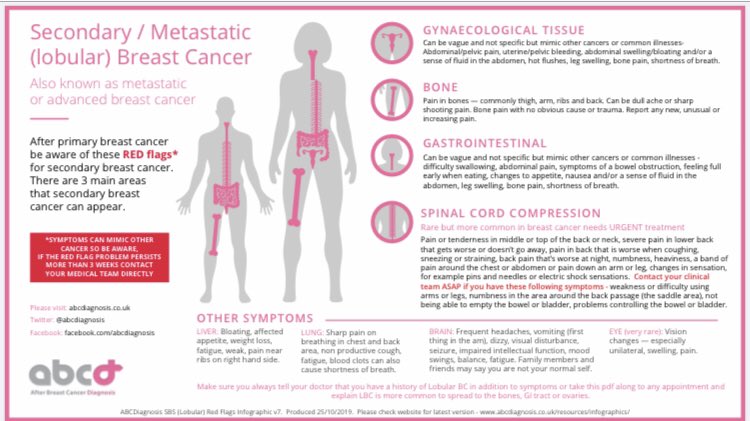 It was a reaction to the release of the hormone oxytocin. The muscle fibers of the milky passages were strongly contracted, milk was added, and a compressive or stabbing pain appeared.
It was a reaction to the release of the hormone oxytocin. The muscle fibers of the milky passages were strongly contracted, milk was added, and a compressive or stabbing pain appeared.
In most cases, treatment during the period of hormonal changes is not required. It is enough to know why the chest hurts before, during or after menstruation. However, it is definitely worth observing your condition, if the nature of pain sensations changes, you definitely need to go to the doctor.
Cysts
In some cases, women report that for some reason they only have pain in their right or left breasts. Cysts can form in the mammary gland – cavities filled with fluid. These are benign formations that have a different size and shape – round, oval, irregular. Most often, breast cysts occur in women between the ages of 35 and 50, especially those who are already entering menopause and not taking hormone replacement therapy.
There may be several or even many of them, they develop in one or both mammary glands at once. And women are not even aware of their existence and wonder why their chest hurts. It is very difficult to detect them with the help of self-examination. The cyst is groped when it becomes large enough. But more often, such formations turn out to be an unexpected finding on ultrasound.
And women are not even aware of their existence and wonder why their chest hurts. It is very difficult to detect them with the help of self-examination. The cyst is groped when it becomes large enough. But more often, such formations turn out to be an unexpected finding on ultrasound.
In most cases, a cyst is not dangerous, but in very rare cases it can turn into a cancerous tumor. The mammologist should decide on the tactics of observation or removal of the cyst. Therefore, the doctor should ask questions why the chest suddenly began to hurt, although menstruation is not yet expected on the horizon.
Fibrotic changes
At the appointment, the patient may ask why her chest is swollen and sore, and at the same time it has ceased to be homogeneous to the touch. Pain in the mammary gland, as a rule, aching, pulling. Painful seals of various sizes may appear inside. This is due to the fact that, for various reasons, breast tissue is partially replaced by connective tissue, the structure of which is different.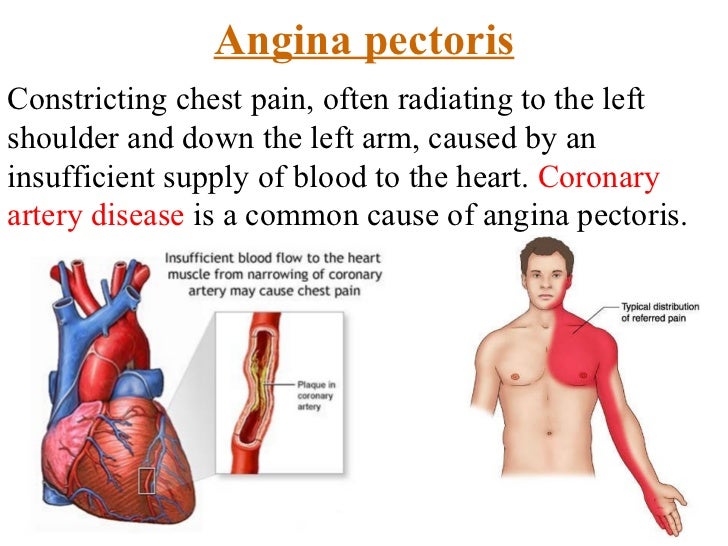 Such changes often occur in women between the ages of 30 and 50. But they are neither cancer precursors nor cancer-causing changes.
Such changes often occur in women between the ages of 30 and 50. But they are neither cancer precursors nor cancer-causing changes.
A popular recommendation for fibrous mastitis, as doctors call it, is to cut down on caffeine and use evening primrose oil. Once the causes of chest pain are identified, they can of course be used. But scientific data confirming the effectiveness of these funds is clearly not enough.
Fibroadenoma
Fibroadenomas are quite common in breast tissues. These are benign tumors that almost never turn into cancer. But they serve as an answer to the question why the chest hurts in a girl under the age of 18. The fact is that fibroadenomas occur more often in young women than in mature women. In children and adolescents, they rank second in terms of the frequency of detected tumors.
The doctor may suggest keeping the fibroadenomas and monitoring them, but surgery is also a possibility. Surgical removal with general anesthesia is usually performed when the lesions become quite large.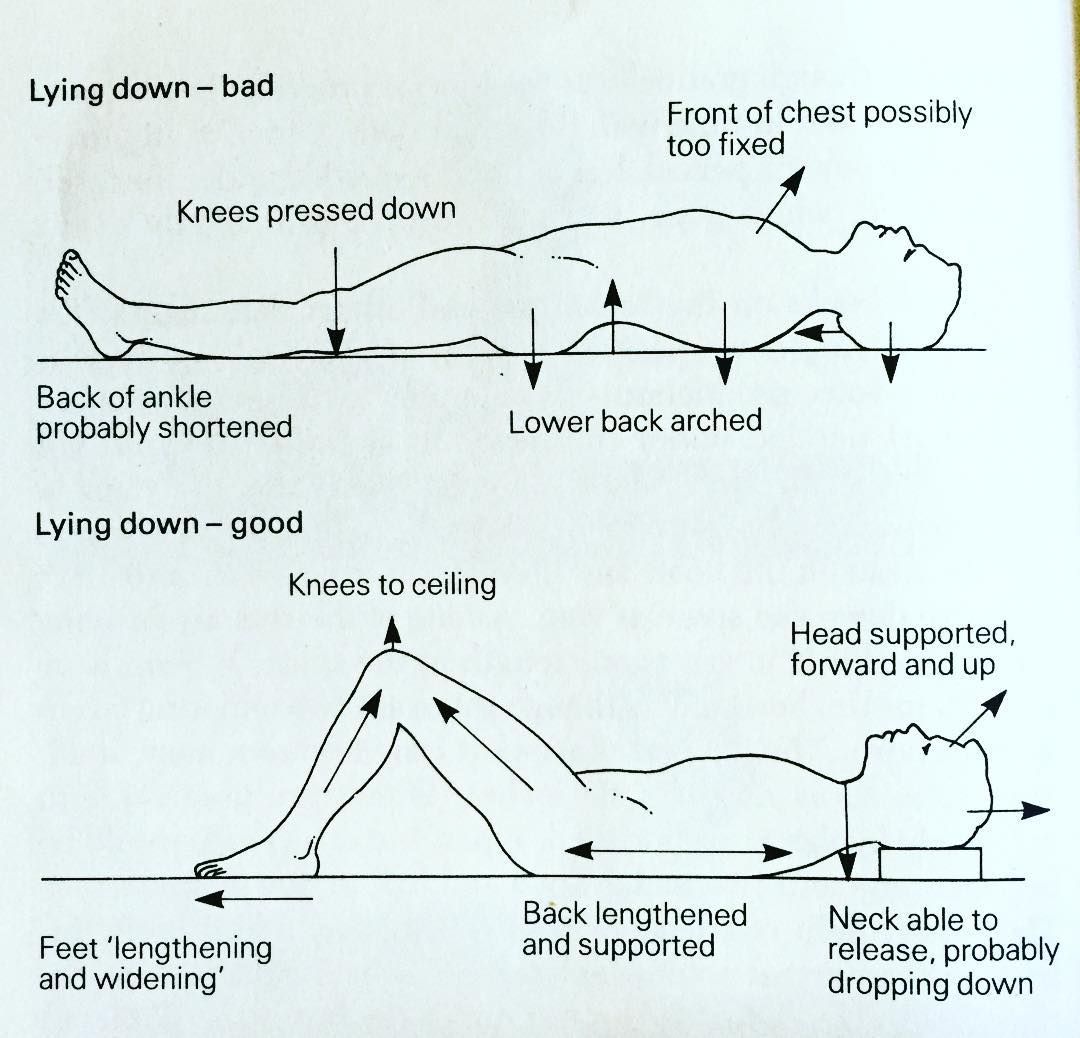
Medications
Certain medications can cause breast pain. For example, antidepressants and other drugs for the treatment of mental disorders, hormonal drugs (birth control pills), drugs prescribed to support heart and vascular health.
Mastitis
When a woman has prolonged stasis of milk in the ducts, it is no wonder why her breasts hurt for a week. Most likely, the mother developed mastitis – inflammation of the mammary gland. It can be lactational, that is, associated with breastfeeding, as well as non-lactational, which has arisen for other reasons.
With mastitis, an infection enters the body – through sores or cracks in the nipple formed during feeding a child, or skin damage that has appeared due to playing sports, wearing underwear, and so on.
Pain during mastitis is very severe, shooting, and along with pain, weakness develops, the temperature rises, the mammary gland itself turns red and becomes hot. It is also the answer to the problem of why nipples hurt badly on the chest.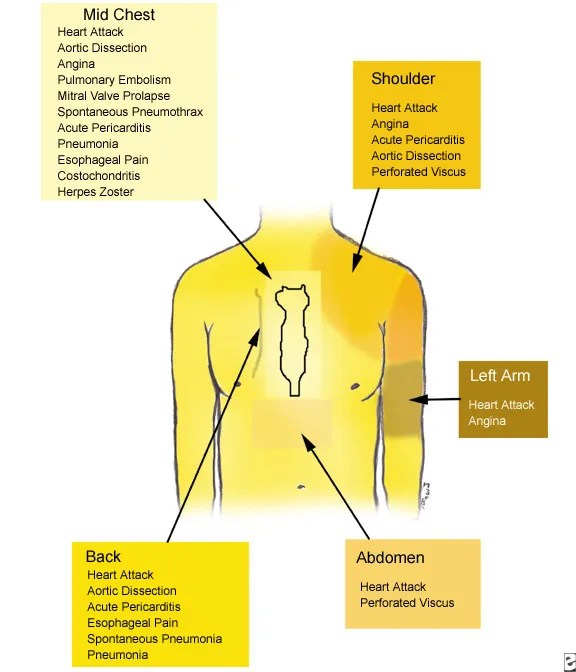 Inflammation completely fetters one or both mammary glands. The appearance of mastitis is a reason for a quick visit to the doctor. While the inflammatory process has not yet gone too far, you can get by with a course of antibiotics. In more advanced cases, surgery is likely.
Inflammation completely fetters one or both mammary glands. The appearance of mastitis is a reason for a quick visit to the doctor. While the inflammatory process has not yet gone too far, you can get by with a course of antibiotics. In more advanced cases, surgery is likely.
Wrong bra
The wrong bra can also cause serious discomfort and explain why the underbust area hurts. The cups of a too tight bra sometimes dig in and press hard, rubbing the delicate skin. If the bra is too loose and the chest is heavy, then it can also hurt – due to the lack of necessary support.
You can solve this problem by choosing and adjusting the bra that suits you.
What to do if your chest hurts
When the causes of pain in the mammary glands are clear, you should move on to solving the problem. Here is a list of the most standard and universal recommendations for discomfort:
- regularly visit a mammologist so as not to miss something really important;
- watch your weight – excess kilograms can make already large breasts heavier;
- cut down on caffeine and chocolate;
- take B vitamins and vitamin E;
- Express properly without allowing milk to stagnate when breastfeeding;
- Eat properly and in a balanced way.

How to relieve chest pain
If you know why your chest hurts, it is important to get the factors that contribute to this condition under control. First of all, when unpleasant sensations arise, you need to ensure peace for yourself, wait a little with physical activity. During the period of hormonal surges, one should rest more, normalize sleep, give up alcohol and smoking, be outdoors, walk.
To avoid soreness in the chest, wear comfortable underwear made from natural fabrics. With cyclic pain, the doctor will help you choose oral contraceptives or adjust the dosage of those that you are already taking. You can also take an over-the-counter anti-inflammatory medicine to make you feel better, after consulting with a specialist. Also try not to get nervous over trifles and keep your weight normal.
Also try not to get nervous over trifles and keep your weight normal. In order not to wonder why your chest suddenly started to hurt, try to control your salt intake, especially in the second phase of the cycle. And a week before your period, do not drink a lot of strong tea and coffee. If the sensations continue to disturb and become stronger from time to time, you should take a general blood test, examine it for hormone levels, do an ultrasound of the pelvic organs, mammary glands and mammography.
And a week before your period, do not drink a lot of strong tea and coffee. If the sensations continue to disturb and become stronger from time to time, you should take a general blood test, examine it for hormone levels, do an ultrasound of the pelvic organs, mammary glands and mammography.
Photo: Shutterstock
Myasnikov explains why breast pain can occur
February 06, 2023
14:22
Foreign statistics show that about 40 percent of women experience chest pain in one way or another. Dr. Alexander Myasnikov spoke in detail about the reasons for its appearance in the new issue of the program “About the Most Important” on the channel “Russia 1”.
What is important to know about breast pain?
1. Cyclic pain in both breasts is usually harmless.
2. One mammary gland hurts – a sign of pathology development.
3. It hurts when pressed and there is redness – this may be mastitis.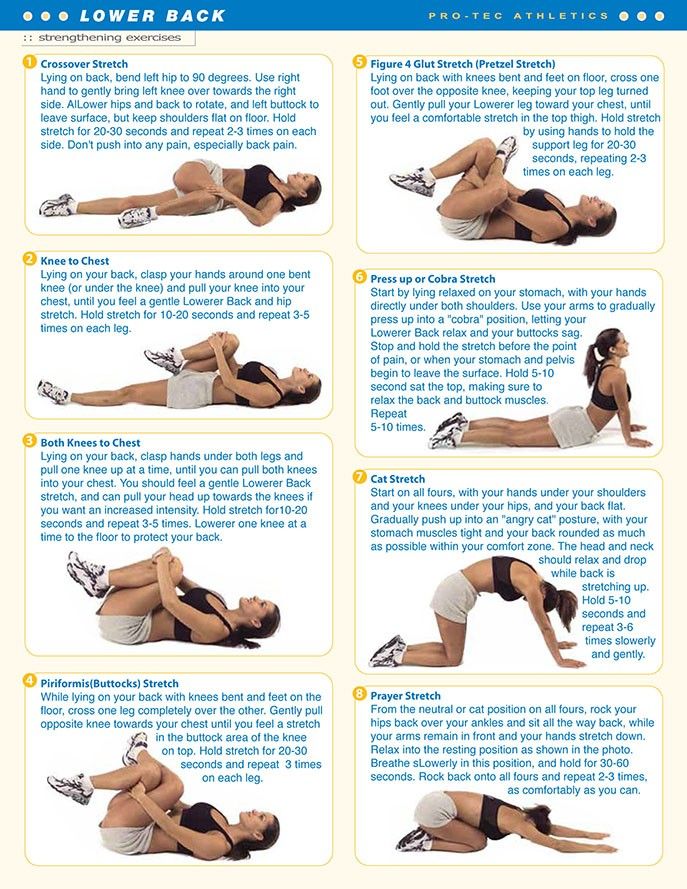
4. Pain in the mammary glands and back – perhaps this is neuralgia.
“We share: one breast hurts or on both sides, it is cyclical, as, for example, before menstruation, or it hurts all the time … But I want to reassure women right away: breast cancer does not hurt. With rare exceptions, if it is an inflammatory form of cancer …” – said Alexander Myasnikov.
However, women who experience occasional breast pain are not at any higher risk of developing breast cancer than those who do not.
“Those who think it’s not cancer should not be guided by pain or its absence, but by knowing the risk factors and their heredity. Because if you had direct relatives with breast cancer in your family, your risks increase accordingly” , – said the host and recall that today breast cancer is one of the most curable, especially at an early stage.
It is also important to remember that when the chest hurts, it is not always the mammary gland.